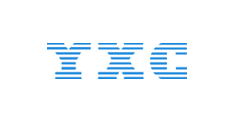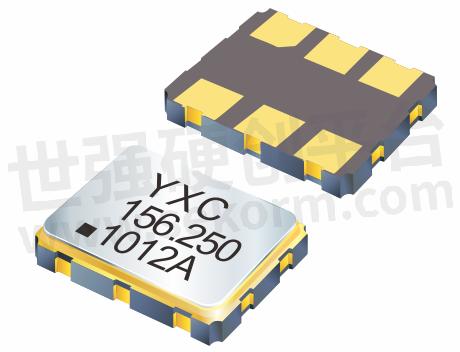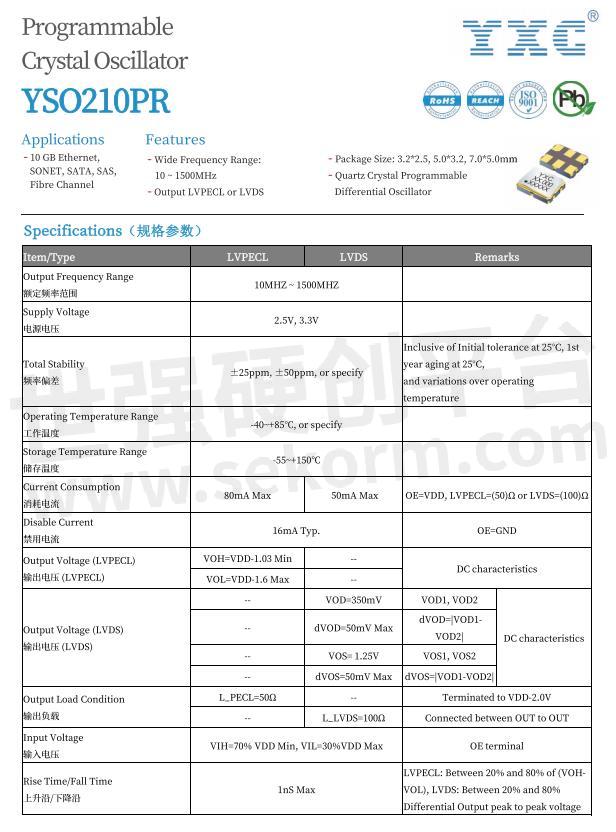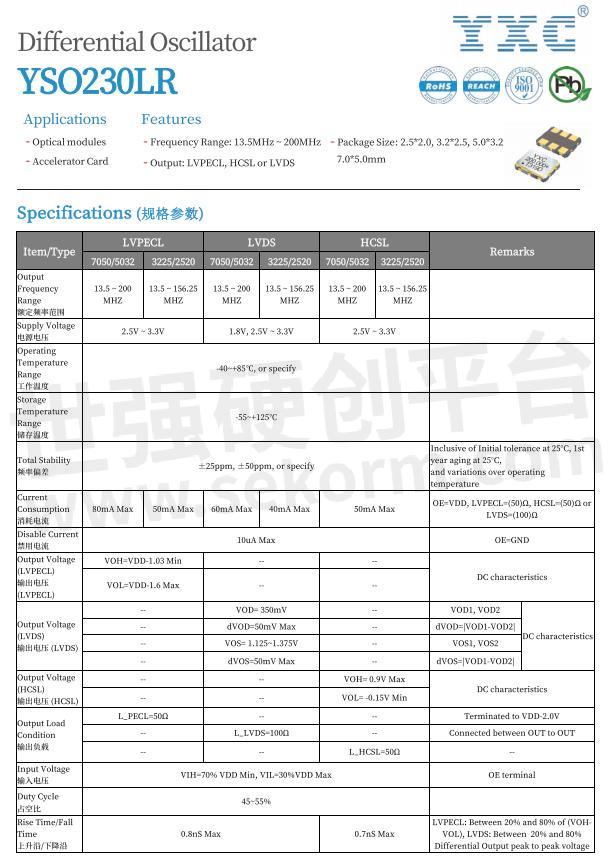Optical Modules Remain Popular, with The Best Time-Frequency Cp-Differential Crystal Oscillator

With the rapid development of emerging technologies such as 5G, Internet of Things, and cloud computing, optical modules, as core equipment in optical communication systems, are becoming increasingly important. Optical modules are not only widely used in the telecommunications market (such as 5G base stations) and data centers (IDC), but also show great potential in automotive electronics, medical and other fields, and their popularity continues to increase.
Optical modules, whose full name is optical transceiver modules, are one of the core accessories in network communications, and mainly complete the conversion between optical signals and electrical signals. Optical modules are composed of optoelectronic devices, functional circuits, and optical interfaces. The optoelectronic devices include two parts: transmitting and receiving. The transmitting part converts the electrical signal into an optical signal, and the receiving part converts the optical signal into an electrical signal.
01 Optical Module Market-News & Trends
1. Market Growth and Demand Changes
Market size expansion: According to the latest statistics released by LightCounting, an optical communication market research organization, in the first quarter of 2024, despite the cold sales in the telecommunications sector, the demand for ultra-large-scale equipment is in full swing. It is expected that in the second quarter of 2024, the Ethernet transceiver market will reach a new high of more than US$2.6 billion, mainly due to the strong growth in cloud demand.
AI-driven demand: The explosive growth of AI technology has driven the market for optical modules to become more prosperous. In particular, sales of 400G and 800G Ethernet optical modules used to deploy AI clusters are in line with expectations, and even demand for some high-end modules such as 1.6T optical modules is rising. Analysts expect that demand for 1.6T optical modules will rise in the third quarter of 2024, and increased shipments from companies such as NVIDIA will catalyze this trend.
2. Performance of industry leaders
Zhongji Xuchuan: As a leading company in the optical module industry, Zhongji Xuchuan continues to release above-average performance and has set sales records for the third consecutive quarter. The shipment ratio of its high-end products such as 800G continues to rise, and silicon photonics products have entered the testing phase of NVIDIA, with shipments expected to be around 500,000 to 700,000 in the second half of the year. In addition, Zhongji Xuchuan is in a leading position in the development of 1.6T optical modules, and mass shipments are expected to begin in September this year.
Xinyi Sheng: Xinyi Sheng's 800G optical modules have officially entered the mass production stage, mainly used for grayscale testing and verification by customers. With the completion of verification, large-scale shipments are expected to start from the third quarter. The company's high-speed optical module products cover a variety of technical solutions such as silicon photonics and thin-film lithium phosphate, and have established complete production capacity in Thailand.
3. Technology Development Trends
High speed and low power consumption: With the expansion of the scale and complexity of data centers, higher requirements are placed on the transmission rate and power consumption of optical modules. In the future, high-speed, low-power optical modules will become the mainstream.
Integration and intelligence: Optical modules will develop towards a higher degree of integration, reducing volume and power consumption by increasing integration. At the same time, intelligent technology will also be applied to optical modules to achieve functions such as automatic detection and automatic repair of network faults.
02 Application of crystal oscillators in optical modules

Crystal oscillators, also known as quartz crystal oscillators, are components used in electronic devices to generate stable oscillation signals. In optical modules, the main function of crystal oscillators is to provide high-precision clock signals and frequency control to ensure that optical modules maintain stability and reliability during high-speed transmission. The performance of crystal oscillators directly affects key parameters such as transmission rate, transmission distance, power consumption and volume of optical modules.
In order to meet the increasingly stringent timing signal requirements of high-speed data transmission and processing scenarios, YXC has launched a series of low-jitter, high-precision, high-frequency, miniaturized, and high-temperature resistant differential crystal oscillator products to provide highly reliable clock solutions for related application scenarios.
High rate and low jitter
With the popularization of 5G and the Internet of Things, the requirements for the transmission rate of optical modules are getting higher and higher. To meet this demand, the crystal oscillator used inside the optical module must have the characteristics of high rate and low jitter. For example, the 156.25MHz differential crystal oscillator is widely used in high-speed optical modules due to its low jitter and high stability to ensure the stable operation of the digital signal processor (DSP).
Small package and integration
With the miniaturization trend of electronic products, the package types of optical modules are getting smaller and smaller, and the design is getting more and more sophisticated. In order to save PCB space, small-size packages such as 3225/2520 are preferred in the selection of crystal oscillators, which not only meet the requirements of high rate and low jitter, but also provide a variety of package sizes to meet the design requirements of different optical modules.
Industrial-grade temperature stability
The working environment of optical modules is complex and changeable, which places higher requirements on the temperature stability of crystal oscillators. Industrial-grade crystal oscillators can usually work stably in the temperature range of -40℃ to +85℃ or even higher, ensuring that optical modules can operate normally in various extreme environments. For example, the YXC differential active crystal oscillator not only has low phase jitter, but also meets industrial-grade temperature requirements and is widely used in high-speed optical modules.
03 Recommended selection - YXC differential crystal oscillator

High frequency | High stability | Low jitter | Low power consumption | Small size
Recommended YXC crystal oscillator models
Common frequency points for optical module applications
156.25MHz/155.52MHz

Features of differential crystal oscillator products
》High frequency range: 10 MHz ~2100 MHz
》Excellent phase jitter: up to 50 fs (@12 KHz to 20 MHz, 156.25MHz)
》Multiple output modes: LVDS, LVPECL, HCSL
》High precision and high stability: Provide ultra-high precision differential crystal oscillator with FS±25ppm
》Wide operating temperature range: -40℃ ~ 85℃, 105℃ or 125℃
》Complete package size: Provide from 7.0 * 5.0mm to 2.5 * The package size between 2.0mm meets the flexibility and miniaturization requirements of PCB design
The product series specifications are as follows:



- +1 Like
- Add to Favorites
Recommend
This document is provided by Sekorm Platform for VIP exclusive service. The copyright is owned by Sekorm. Without authorization, any medias, websites or individual are not allowed to reprint. When authorizing the reprint, the link of www.sekorm.com must be indicated.


























































































































































































































































































































































































































































































































































































































































































































































































































































































































